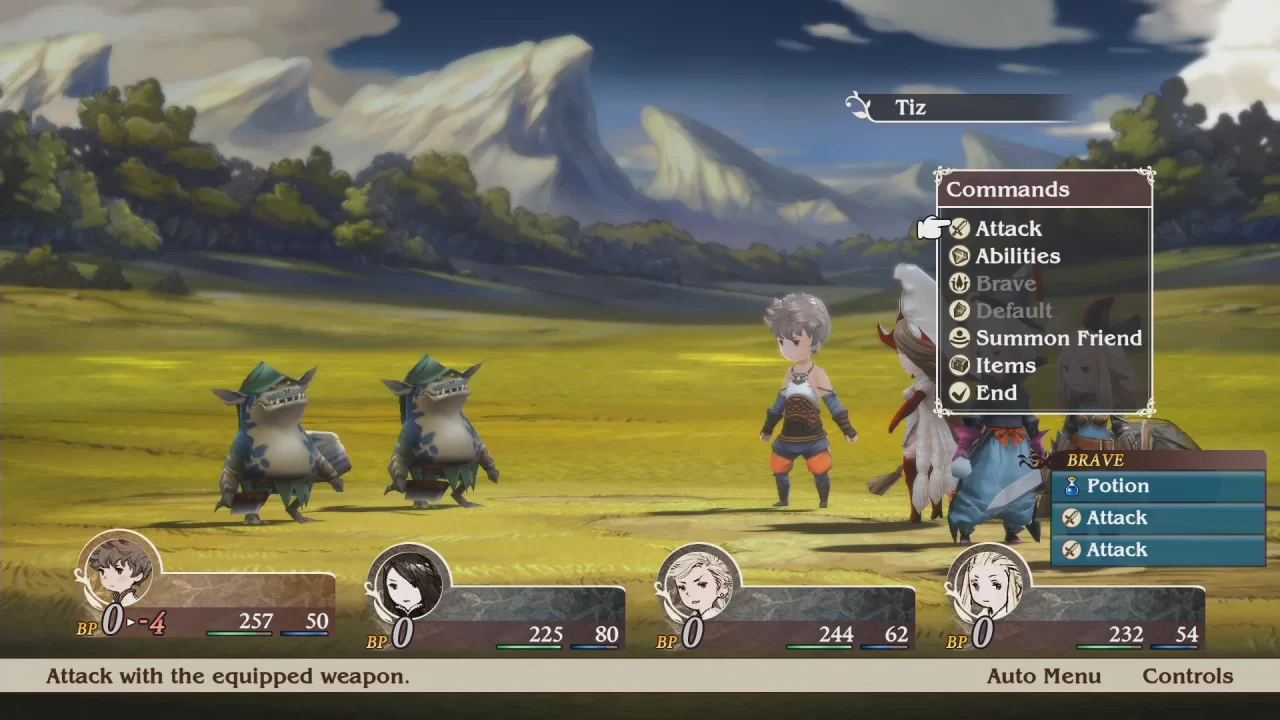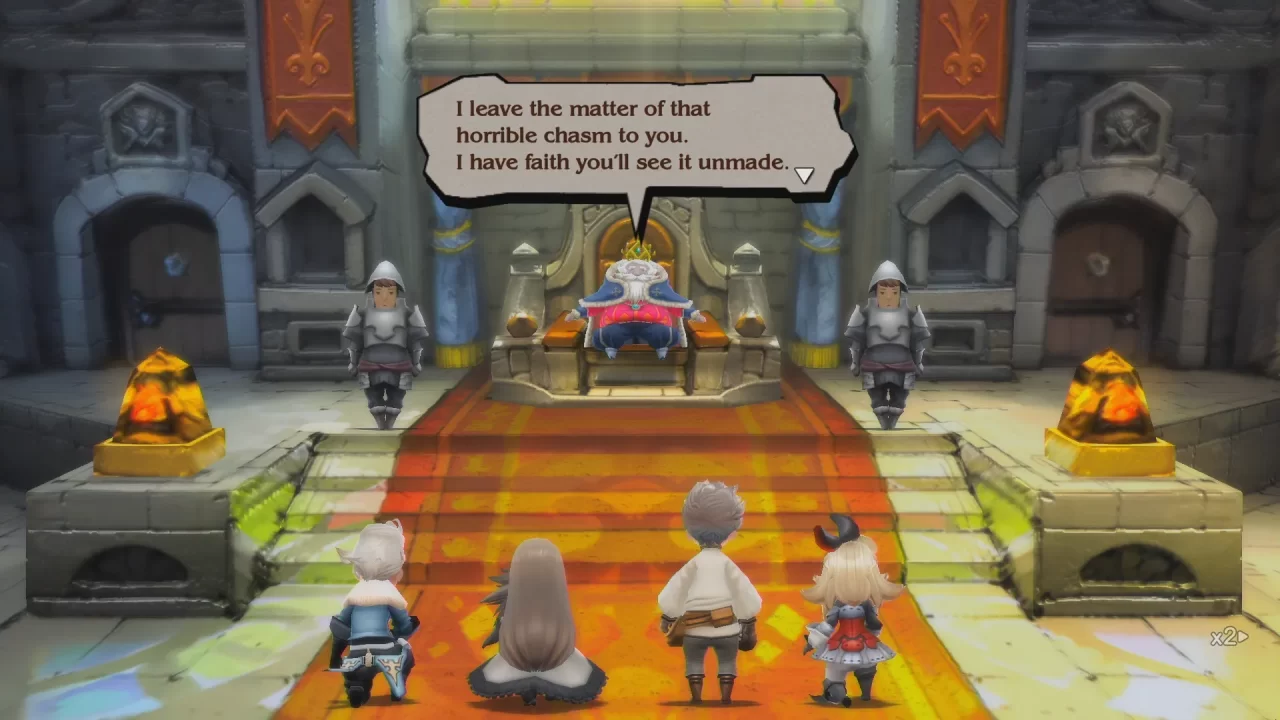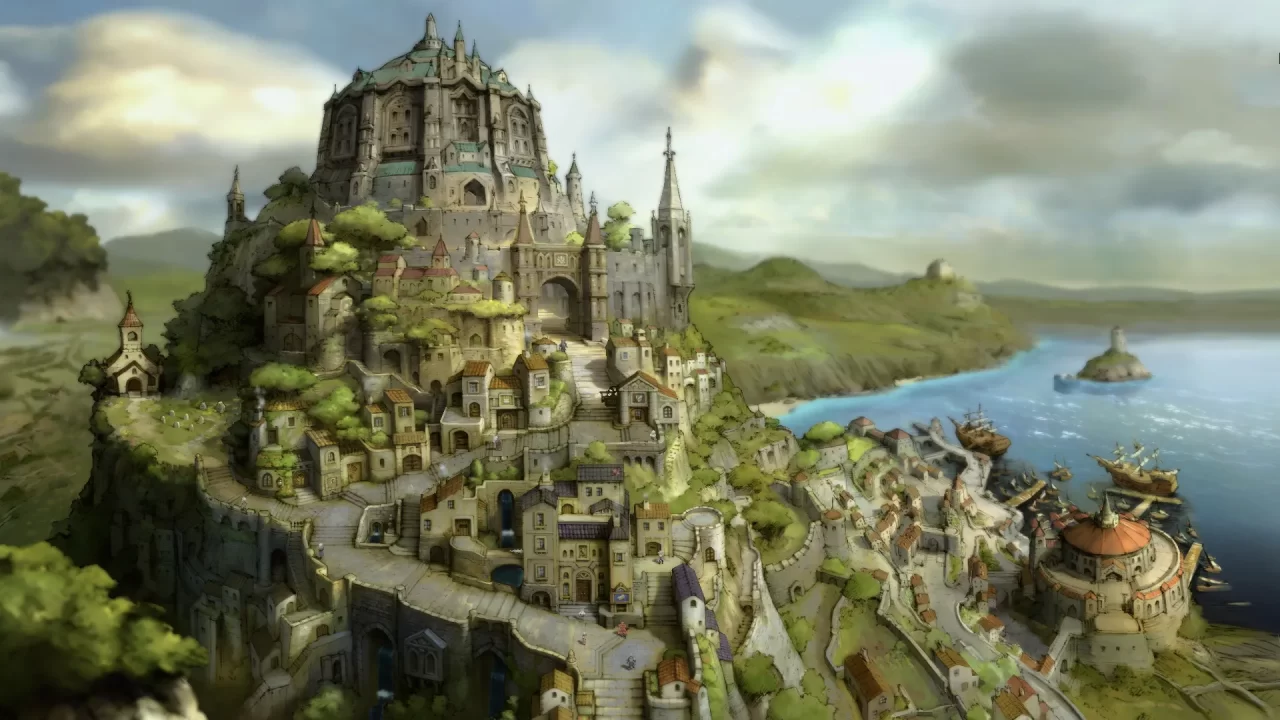Bravely Default: Flying Fairy HD Remaster comes over 12 years since the publication of the original iteration. Bravely Default itself is something of a touchstone for the JRPG community, frequently working its way into conversations surrounding the genre. Despite this, I never quite got around to engaging with the series. The release of a fresh new version provides us Bravely laggards with the ideal excuse to try it out for the first time. As a Switch 2 exclusive, it also helps to pad out a roster of launch day titles that cater to our collective tastes. Does it justify its position in that lineup?
Bravely Default wears its heritage proudly as a descendant of the Final Fantasy series, initially starting life as a sequel to Final Fantasy: The 4 Heroes of Light on the DS. Having recently played the Final Fantasy Pixel Remasters, the resemblances stood out like a Chocobo at a chicken farm. However, whilst the early Final Fantasy games are the product of their time, with basic stories and simplistic mechanics, Bravely Default steps forward, grabs hold of the primal Final Fantasy DNA and merges it with a strand of dark magic that the finest Black Mage would be proud of.
No more so is that thread of jet found than in the plot. Bravely starts with the advent of a cataclysm that rocks the world of Luxendarc, as a chasm opens in the centre of that world, swallowing up the village of Norende, from which our protagonist Tiz hails. During this event, Tiz fails to save his brother, a narrative moment that isn’t the last time Bravely shocks with its willingness to take surprisingly brutal turns. Soon after this, Tiz meets the vestal (a kind of priestess) Agnes, who has set out on a mission to cleanse and reawaken the four crystals, which have been plunged into shadow, taking the stability of the world with them. Airy the Fairy, who becomes a constant presence, accompanies Agnes, urging them on to the completion of their task. The Eternian army, followers of the “anitcrystalism” movement, stand diametrically opposed to the party and Agnes’ goals. During these struggles, Tiz and Agnes collect more companions, including the rebellious Eternian soldier Edea and the louche lothario Ringabel.
This narrative framework underpins what is, at its core, a game in love with turn-based gameplay systems and the innovations that Bravely brings to them. The central conceit is in the title: instead of the usual one-at-a-time slapping contest often presented to us by the genre, you can opt to Brave or Default. Choosing to Brave allows you to take an extra turn, whilst selecting Default banks a turn and simultaneously bolsters your defence. You need to take care, though, as it is possible to go into debt on your turns, leaving your character open to all sorts of malfeasance from your opponents. This deceptively simple system is an absolute revelation for people like me who have played more turn-based JRPGs than Ringabel has chased unfortunate women. At first, it might seem obvious that the best way to proceed is to Default up to the maximum three turns and then unleash your righteous fury, as the JRPG gods intended. Although this strategy often works, doing so can land you in hot water in some scenarios. Significant fights require more from you, making you choose between the benefits of a cautious approach or risking it all to get in first and reduce the enemy’s damage-dealing potential.
As important as this system is, it would not be nearly as successful were it not accompanied by one of the best job class systems I have encountered, in terms of range and implementation. At the start of the game, the only job class available is Freelancer, a kind of jack-of-all-trades grab bag role. Soon, though, Bravely sets you at odds with a miscellaneous bunch of villains and antagonists, each of whom shows unique abilities. In an excellent twist, beating these “asterisk” holders gains you their job classes, which allows you to learn their abilities (and gift your team with snazzy outfits) through levelling up the jobs. You come across some of these jobs naturally through progression, although others are locked behind side-quests. This is a case when you will want to step off the beaten path, as acquiring jobs not only increases your options and can ease your way through tough battles, it also opens the world up, deepening the backstory of key figures and making the main narrative beats that much more impactful.
Now, I’m someone whose main drive to play RPGs comes from my love of story and characters, with the actual game elements often taking a backseat in my preferences. I can forgive some shoddy design choices if you managed to rip my heart out at the mid-point. This makes it all the more surprising how effectively this job system captured me. Jobs range from the familiar, such as Black Mage and White Mage, to more unusual choices such as Salve Maker and Spell Fencer. Despite the vast array of abilities available, it is always easy to understand how each works. Each character can select a main job and a secondary one, adding layers of customisation that are a joy to experiment with.
Despite the breadth of options available, Bravely Default can still be very hard. This is definitely not the game to use when attempting to convince your CoD-loving pal to take a walk on the wild side with the turn-based crowd. If you pick Bravely up hoping for a nice, relaxed time (and perhaps a fishing mini game), you will be sorely disappointed. Saunter in unprepared to a boss fight and Bravely will fry you like a monster scorched by a Firaga spell. Get used to hearing the game over music, because you will, a lot. The game has a rhythm; you test out the encounters, discover patterns and weaknesses, die horribly, then improve your game plan and go in for another attempt. What’s more, you will do a lot of grinding, making Bravely’s extensive and adaptable auto-battle systems and adjustable encounter rate essential, rather than merely convenient.
I hinted earlier that the plot of Bravely Default is surprisingly good for something so gameplay-focused. Indeed, events frequently move in unexpected directions. Whilst you shouldn’t expect a modest tale to match the best the genre has to offer, it does have a wonderful, untamed feel to it, another benefit of harking back to earlier days. The character designs have notable contributions from Akihiko Yoshida, whose credits include extensive work for Square/Square Enix, such as Final Fantasy Tactics and Nier: Automata. The distinctive super-deformed style, likely created at least in part to account for the limitations of its original platform on the 3DS, is divisive, but stands on par with the most iconic of Yoshida’s creations.
I must also mention the soundtrack by composer Revo and his musical project Linked Horizon. You may be familiar with Revo from the incomparable work he did on the anime series Attack on Titan, which is on frequent repeat play in my house. In Bravely Default, he shows an even greater range; the themes that play when a character activates a special move are the culmination of this diversity. Each piece of music has a specific length and if you trigger another before it ends, you keep the accompanying stat bonuses going. These music pieces perfectly reflect the team’s personalities, such as Agnes’ track “Where the Wind Blows,” which gives off an air of mystical hope, or Ringabel’s “Romantic Vagrant,” with its continental sounding accordion melody, quite suitable for the adventurous Casanova.
Bravely Default has so much going for it that it might have made it into the upper echelons of my favourite JRPGs of all time. The fact that it didn’t comes down to one major issue. For half of the game, you explore the land of Luxendarc, visiting memorable locales like the flowering town of Florem and the floating city Grandship, and meeting memorable characters. Then something happens which changes the structure of the game into one of constant, mind-numbing repetition.
Charitably, one might suggest they do this to encourage full engagement with the mechanics and the job system. There is also strong thematic and narrative reasoning behind the move. For me, though, that’s just not enough. Bravely Default forced me to endure the same content repeatedly over tens of hours, souring the experience for me. The end content, featuring some beautiful moments tied into the game’s communal aspects, somewhat redeems it, but the extensive asset reuse is pretty unforgivable.
If you want to play Bravely Default, the HD remaster is the way to do it. The dreamlike, painterly locales are stunningly depicted in the new, widescreen format, taking full advantage of the Switch 2’s HDR capabilities. If you let your character idle for a moment, the camera pulls back to reveal your surroundings, which are a pleasure to take in. The crisp definition of the cleaned-up graphics is welcome, too. There are also two new minigames: “Luxencheer Rhythm Catch,” a dancing game, and “Ringabel’s Panic Cruise,” where you pilot an airship. Both use the new mouse functionality of the Switch 2 controllers, and are fun, if extremely gimmicky and utterly superfluous.
Bravely Default: Flying Fairy HD Remaster provides a definitive way to experience an excellent JRPG from yesteryear. Flawed though it is, I would still recommend it as a truly unique experiment, blending classic vibes with an innovative spirit that earns it the right to be revisited in this more polished form over a decade after its original release.





